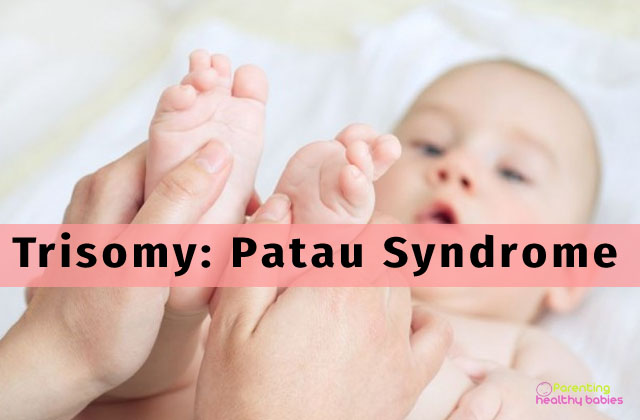All of the most important organs in the human body are protected by membranes. These are present to provide much needed protection to not only organs that are crucial to all of our bodily functions, but to protect their fragility in the wake of daily activity, which can prove to be more strenuous to our internal organs than we think. The brain and the spinal cord make up our central nervous system, which possesses a thoroughly complete network of nerves all over the body to send and relay messages that ensure we are in control of our body the way we want it to be.
The importance of the central nervous system is too obvious and need not be elaborated upon here and therefore, the principal organs also are protected by membranes as well, which is hardly surprising, considering their crucial role in maintaining our bodily processes. These membranes happen to be called meninges, and as such are instrumental in protecting not only the brain but the spinal cord as well, despite the latter having the vertebrae as a form of protection that is quite sturdy. The meninges, however, can be susceptible to inflammation, and in the event of this happening, this condition is called meningitis. In the following article, we shall explore the process of how this disease is caused, along with its most common symptoms, and of course, the methods that can be used to first diagnose it, and then treat it in its entirety.
Meningitis In Children: Symptoms, Causes, Treatment, Prevention
SYMPTOMS:
- Infants, i.e. children lower than the age of 3 months, may have inadequate appetites and be prone to frequent bouts of vomiting.
- They can also be increasingly tired accompanied with rashes all over their skin.
- Babies may also have a rigid neck and/or a swollen fontanelle, i.e. the soft portion on their heads.
- Children in general may also be prone to recurrent seizures or even prone to mood swings.
- Petechiae, or tiny, red or purple spots caused by internal bleeding into the skin, may be a symptom of bacterial meningitis.
- The Brudzinski sign is a physically demonstrable symptom of meningitis, where the knees automatically jerk up towards the body when the stiff neck is bent forward while lying straight on the back.
- Red to purple skin spots that do not whiten under pressure, otherwise known as purpura, may be a symptom associated with bacterial meningitis.
- The Kernig sign is another physical symptom where the thigh is flexed at a right angle to the body lying flat on the back, and if there is pain and resistance when the knee is extended, that is a sign of meningitis.
CAUSES
In order to comprehend the various causes of meningitis in children, one must know the principal kinds of the illness, for they are named after their causative agents, namely viruses and bacteria. They are called viral and bacterial meningitis respectively, and they have discrete symptoms. However, there is a cause common to both these types of meningitis in children— as children and infants are fragile, their immune systems are not fully developed, and as such, they are more easily exposed to bacterial and viral infections and attacks. Moving on, here are the principal causes of meningitis in children:
1. Enteroviruses are the most common cause of viral meningitis. In temperate climates, they are at their most active in the middle months of the year. They can be spread most typically through the contact of faeces through infected water and surfaces, as well as through the changing of diapers.
2. Other viruses can also cause this condition, and they can be spread via childbirth, droplets in the air, direct contact, or animal and insect bites, among others.
3. Neisseria meningitidis as well as streptococcus pneumoniae are the two major types of bacteria that cause bacterial meningitis, which is a more dangerous form of the disease. Recent sinus and/or ear infections can increase the risk of infection, along with severe head injuries and direct contact as well.
TREATMENT:
After proper diagnosis of the disease and proper identification of the type of meningitis, it is important to start the treatment at an earliest date, because meningitis is a potentially life threatening disease. Therapy with IV antibiotics may be started before the diagnosis tests and their results being out.
In case the child is unable to breathe properly, a breathing tube is to be attached in order to provide oxygen to the suffering child.
A heart monitor is attached to the body of the child in order to monitor the respiratory functions of the child. It is important to see the fluctuations in these bodily functions and note them down for further diagnosis. An IV is started to give fluids and to correct any dehydration. An IV also helps to maintain blood pressure and good circulation. A tube (catheter) may be placed in the bladder to obtain urine and to help accurately measure the child’s hydration. A child who is suffering from bacterial meningitis or has not yet been diagnosed, nut may be suspected to have bacterial meningitis is admitted to the hospital. In this case, the type of monitoring, such as in a pediatric intensive-care unit is determined by the doctor in the emergency department and the doctors who care for the child in the hospital. It is important to keep the child in an environment as bacteria free as possible and make sure that proper hygiene is maintained during the treatment. A child who has viral meningitis and is improving may be sent home for supportive therapy.
Supportive therapy includes encouraging fluids to prevent dehydration and giving acetaminophen (Tylenol) or ibuprofen (Motrin) for pain and fever. If the child is sent home, a doctor must check the child within 24 hours to make certain his or her condition has improved. Encouraging fluids include water, ORS and other fluids, that are germ free and keep the body hydrated for a long time.
PREVENTION:
It is not very easy to pinpoint the exact causes behind the occurrence of meningitis in all cases. But an idea about the general causes is important. Keeping that in mind, it is important to take preventive measures against these causes.
1. Out of all the vaccines that are usually given to children in their infancy, vaccines like the pneumococcal, meningococcal, and Haemophilus influenzae type b (Hib) vaccines can prove to be useful in treating bacterial meningitis in particular. Vaccines are also available to prevent certain types of viral infections that may cause meningitis or other central nervous system infections, including polio, influenza, varicella-zoster (chickenpox), measles, and mumps.
2. Preventive antibiotics are recommended for close contacts of anyone infected with meningococcal infection, even if the contact was previously vaccinated. Close contact refers to the contact that people, who live with children the whole day or spend major part of the day with them, have with children suffering or about to suffer from meningitis.
3. Families of children with meningitis should take care to avoid becoming infected. This includes washing hands after touching the child or changing diapers and before eating or preparing food. Utensils and cups should not be shared, the child’s mouth should be covered during a cough, and the child should not be kissed on the mouth. These measures should be continued until the child no longer has symptoms (eg, fever, diarrhea, rash).













